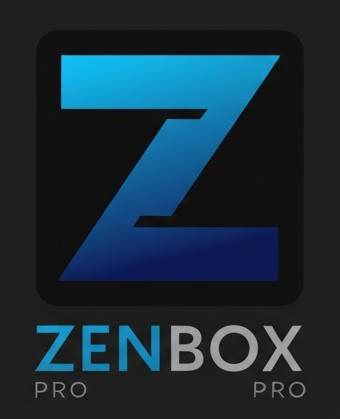Modern cars are packed with technologies that are supposed to improve driving comfort, reduce operating costs and limit the impact on the environment. Unfortunately, not all innovations are appreciated by drivers. One of the most controversial solutions in recent years is the start-stop system. In theory, it is friendly to the wallet and the environment. In practice, for many Hyundai car owners, it is a source of daily irritation. How to deal with it and regain control over your own car once and for all?
Why does the start-stop system annoy drivers?
The start-stop system was introduced as part of the pro-ecological revolution in motoring. Its main task is to automatically switch off the engine when stationary – e.g. at traffic lights, in a traffic jam, or during a short stop – and to restart it when setting off. All this in order to reduce exhaust emissions and unnecessary fuel consumption.
While this may sound reasonable, practice shows that the system is often more of a hindrance than a help. The most common complaints from Hyundai drivers include:
- Delayed reaction when starting off – the engine does not always start smoothly, which can be particularly frustrating when dynamically joining traffic.
- Unpleasant jerks – especially in older engines or during frequent stops in city traffic jams.
- Concern about component wear – frequent switching off and starting of the engine can cause faster wear of the starter, battery and starting system.
- Loss of driving fluidity – especially in the urban cycle, where the driver expects predictable and smooth vehicle responses.
- No memory for settings – the system turns on automatically each time the engine is started, which forces it to be manually deactivated at each start.
For many Hyundai users, this system has become something they simply have to “survive.” But is that really true?
Temporarily deactivating the start-stop system in Hyundai
If you own a Hyundai, you’re probably familiar with the button with the letter “A” surrounded by an arrow. This is what temporarily deactivates the start-stop system. When you press it, a light on the dashboard usually lights up, confirming that the function is off.
Unfortunately, this deactivation only works until the engine is restarted. Each subsequent start of the car means that the system starts working again – and it must be manually deactivated again. What's more, this button is often located in a hard-to-reach place or not very visible, which is why some drivers are not even aware of its existence.
Permanently deactivating the start-stop system – solution with ZENBOX PRO
For drivers who are tired of clicking a button every day, the perfect solution is ZENBOX PRO – a modern device that allows you to permanently deactivate the start-stop system in Hyundai cars.
What makes ZENBOX PRO stand out?
- Safe for vehicle electronics – the device does not modify the factory software, does not affect the ECU or security systems.
- Plug & play – installation is simple, quick and does not require soldering or modifying the installation.
- Memory settings – after installation, ZENBOX PRO remembers the system settings, so you no longer have to press the button every time you start the engine.
- Discreet operation – the device is invisible to the user and does not interfere with the appearance of the car’s interior.
- Compatible with many Hyundai models – solution tested in the most popular cars of this brand.
With ZENBOX PRO you can once and for all forget about the annoying stopping of the engine at every intersection and enjoy a smooth, quiet ride – just as it should have been from the start.
Hyundai models whose start-stop system is the most controversial
Not all Hyundai models irritate users to the same extent. However, based on driver opinions and reports from automotive forums, it is possible to indicate specific models in which the start-stop system arouses the most negative emotions:
1.Hyundai Tucson (2016–2023)
This is a particularly acute problem in versions with a petrol engine and automatic transmission. Users complain about the system's overly aggressive and unpredictable operation, which reduces driving comfort, especially in the city.
2. Hyundai i30 (2017–2022)
Frequent complaints about delayed engine response after stopping and a feeling of "jerking" when starting again. In addition, the lack of memory for the system settings means that drivers are forced to deactivate the function manually every day.
3.Hyundai Kona (2018–2023)
The start-stop system operates exceptionally frequently and without sensitivity, which becomes inconvenient especially in dense city traffic. Drivers compare it to driving with a "capricious passenger who constantly turns off the engine."
4. Hyundai i20 (from 2020)
In the new generation of the i20, the start-stop system starts very quickly, often when the vehicle is gently stopped. In practice, this means the engine is suddenly switched off, even if the driver has not planned to stop for a long time.
5.Hyundai Santa Fe (2019–2023)
Despite the larger dimensions of the car, the system works very intensively, which results in noticeable discomfort when starting and joining traffic. Users of large SUVs expect fluidity, which this system does not provide.
Summary
The start-stop system in Hyundai cars is an example of technology that is more of a hindrance than a help. While the idea of saving fuel and caring for the environment is sound, it should not come at the expense of driver comfort. Daily, manual deactivation of the function becomes a burdensome ritual that becomes increasingly frustrating over time.
Fortunately, there is a solution – ZENBOX PRO allows you to completely eliminate the problem without interfering with the vehicle's electronics. Thanks to this, drivers can regain full control of their car and enjoy driving without unnecessary interruptions.
If your Hyundai tries to decide for you every day when the engine should run - maybe it's time to thank it and take control with the help of a proven solution, such as ZENBOX PRO.
